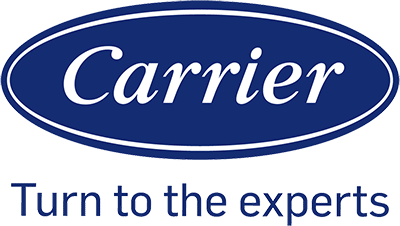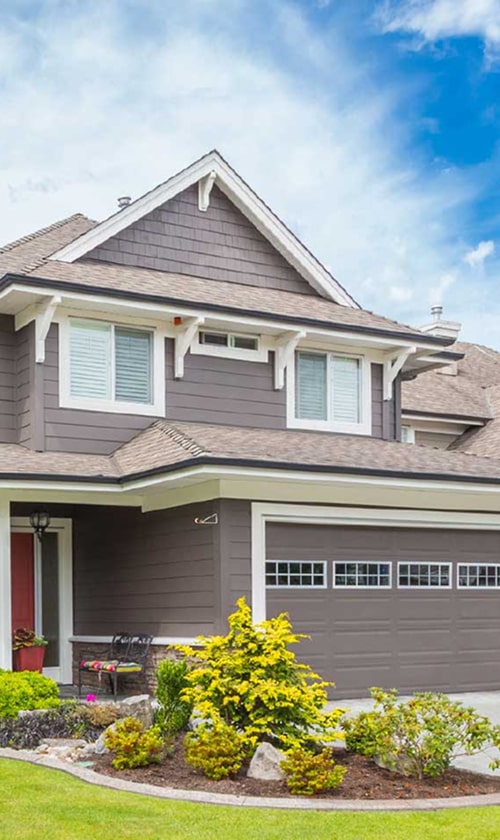Key Cost Factors for Central Air Conditioning Installation

Several factors affect the total cost of installing central air conditioning in a home. The type of system, unit size, ductwork needs, and labor charges all play a major role in what we pay for installation.
Central Air System Types
The system type is a key driver of installation prices. The two main kinds are split systems and packaged systems. A split system includes separate indoor and outdoor units, which makes it common for homes with existing furnaces or forced-air heating. Packaged systems combine all functions in a single cabinet, usually placed outside.
Split systems are often less expensive to repair but may involve more labor to install. Packaged systems need less indoor space but can cost more upfront. The choice between these options depends on what our home needs and the space available. Each has its own cost range for equipment and installation.
Unit Size and Tonnage
The size of the AC unit measured in tons has a huge effect on cost. Unit size matches the cooling needs of our home, often based on square footage, insulation, and climate. Common home units range from 1.5 to 5 tons. Larger units cool more space but cost more to purchase and operate.
Choosing the right tonnage is important for efficiency. Too small, and our home stays warm; too large, and we waste energy and money. Most HVAC contractors use calculations to find the right size, taking into account our windows, ceiling height, and other details. Bigger isn’t always better; the correct size ensures comfort and lower energy bills.
Ductwork and Insulation Requirements
Ductwork is essential for central air conditioning. If our home has existing ducts in good shape, costs stay low. But if we need new ducts or major repairs, expenses rise quickly. New ductwork can add several thousand dollars to installation prices.
Insulation also matters. Poorly insulated homes lose cool air, making the system work harder and adding to operating costs. Improving insulation in walls, attics, and floors can increase comfort and efficiency. HVAC professionals often recommend duct insulation as well to keep air at the right temperature until it reaches us.
Labor and Professional Installation
Labor cost is often about half of total installation costs, although prices vary based on location, home condition, and project complexity. Hiring a licensed HVAC contractor ensures that our new system is installed safely and up to code.
Most HVAC professionals charge by the hour or give a flat fee. Labor to install central air usually includes removing old equipment, setting up the new unit, connecting electrical and refrigerant lines, and testing the system. If ductwork or other repairs are needed, labor costs rise. High-quality installation leads to better performance and fewer repair costs over time.
Detailed Breakdown of Central Air Installation Costs

Central air installation costs can range widely based on unit size, efficiency, and brand. To understand what affects the total price, we need to look at average costs, how unit size and SEER rating affect pricing, and what different brands charge for their systems.
Average Cost Range and National Averages
The typical cost to install central air in the United States usually falls between $4,500 and $8,000. The national average cost to install central air is about $6,000. This price covers both the central AC unit and professional installation.
Several factors affect where our project lands in this range, including house size, existing ductwork, and labor rates in our area. Older homes without ducts often require extra work, raising total costs by $2,000–$4,000. Using an installation cost calculator can help us estimate more closely based on our location and home details.
Cost by Unit Size and SEER Rating
Central air conditioners come in sizes measured by British Thermal Units (BTUs) or tons. A small home may need a 2-ton unit, while larger homes often require 4 to 5 tons. Unit cost rises as size increases. Here’s an overview:
| Unit Size (Tons) | Average Unit + Install Cost |
|---|---|
| 2 | $3,500–$5,500 |
| 3 | $4,000–$6,500 |
| 4 | $4,500–$7,500 |
| 5 | $5,000–$8,000 |
SEER ratings measure efficiency. Higher SEER (like 18 or 20) means lower energy bills but higher upfront costs. Standard units with a SEER rating of 14 are less expensive but less efficient.
Brand and Equipment Pricing
Central air conditioner prices vary a lot by brand. Premium brands, such as Trane, Lennox, and Carrier, often cost more upfront but offer better warranties and higher reliability. Budget-friendly brands like Goodman and Payne have lower AC unit costs but fewer features and shorter warranties.
For example, Trane or Lennox units (3-ton, 16 SEER) can cost between $4,500 and $6,500 installed. Brands like Goodman or Payne may range from $3,500 to $5,000 for similar size and SEER. Choosing a brand impacts not just the price, but also the expected lifespan and service quality of our central AC unit.
Efficiency Ratings and Energy Savings
Choosing a central air conditioner with a higher efficiency rating can lower our energy bills and improve our return on investment. We can also take advantage of government tax credits and local incentives, which help with upfront costs and provide more value over time.
Impact of SEER and Efficiency Ratings
The Seasonal Energy Efficiency Ratio (SEER) measures how much cooling a system provides for each unit of energy it uses. A higher SEER rating means the air conditioner uses less electricity to cool our home.
New units usually start at a SEER of 14, but models can reach 26 or higher. Upgrading from a SEER 13 unit to a SEER 18 system can cut our cooling costs by about 28%. Higher SEER ratings often mean higher upfront prices, but we pay less each month for energy.
| SEER Rating | Estimated Annual Savings* |
|---|---|
| 14 | Baseline |
| 16 | 13% less |
| 18 | 28% less |
| 20+ | 35%+ less |
*Compared to SEER 13 systems
Tax Credits and Incentives
We can reduce the cost of a new system by using tax credits and rebates. The federal government may offer up to $2,000 in tax credits for high-efficiency central air conditioning installed in primary homes. Some states and utility companies provide added rebates, which range from $100 to over $500 depending on the model and our location.
We should ask our installer about local incentives. These programs usually have qualifications. For example, the system may need to have a SEER rating of 16 or higher. Applying for credits and rebates may require us to save purchase receipts and fill out certain forms.
Long-Term Energy Savings and ROI
Energy-efficient air conditioners lower our monthly bills, offering long-term savings. Even though high-SEER systems cost more upfront, the reduced energy use means our system can pay for itself over time. Rising energy costs make savings from efficient systems even more valuable.
A system with a SEER rating of 18 instead of 14 can save us hundreds of dollars each year, depending on local energy prices and our usage. Over 10 to 15 years, the savings often outweigh the extra purchase cost, improving our return on investment (ROI). Regular maintenance helps us keep the energy efficiency high and protect our investment.
Home and Installation Considerations
Proper central air conditioning installation depends on a clear look at our home’s layout, existing features, and cooling needs. Understanding our space, its limitations, and the required upgrades can save us both money and future hassle.
Pre-Installation Evaluation
A pre-installation evaluation helps us know exactly what our home needs. We usually start with a Manual J load calculation, which tells us the right cooling capacity in BTUs for our space.
This process looks at our home’s square footage, ceiling height, window size, insulation quality, and even our local climate zone. It checks whether our current electrical system can handle a new outdoor condenser unit.
Sometimes, we need an electrician to check if upgrades are required for safety and efficient operation. Inspecting for air leaks, poor insulation, or moisture problems is also important. These issues can hurt indoor air quality and humidity control.
If we skip this step, we risk paying for a system that’s too small or too large, wasting energy and money.
Home Size and Cooling Capacity
Our home’s size and layout decide how much cooling power we need. A small home with a low ceiling might need less than a large, multi-story house. The right AC unit is measured in BTUs.
A home that is too big for a small AC will feel warm and sticky. On the other hand, a large system in a small home may lead to high humidity and poor indoor air quality. That’s why accurate measurements and proper sizing are important.
We should also consider local climate and insulation. Homes in hot or humid areas need more powerful systems. Well-insulated homes hold cold air better, which can save us on energy costs.
Existing vs. New Ductwork
Ductwork has a big impact on installation cost and time. Existing ductwork may save money, but it has to be inspected for leaks, dust, and blockages. If our ducts are old or damaged, fixing them or adding more can cost extra.
New ductwork installation raises the upfront price, especially in older homes without central air. We have to think about where the ducts will go and how much space they take.
If our home’s layout makes duct installation tricky, the cost rises. Air leaks or poor designs hurt efficiency and indoor air quality. Adding new ducts is more than just material it often means cutting into walls and upgrading insulation to meet code.
Additional Factors Affecting Central Air Costs
Several important factors can change the total price of installing central air conditioning. The compressor type, special features, yearly upkeep, and even the chance to improve our home’s resale value all play a role.
Compressor Types and AC Features
Different compressor types affect both the upfront price and the long-term running cost of our central air system.
- Single-stage compressors are the cheapest but only work at full power. They often use more energy, which leads to higher bills.
- Two-stage compressors cost more to install but can adjust to different cooling needs. They use less energy than single-stage units.
- Variable-speed compressors are the most efficient and quiet. They often come with the highest price but offer the best comfort and energy savings.
We can also pay for extra features, like smart thermostats, air purifiers, and humidity controls. High-efficiency units often include these features and can lower yearly energy use, but they make the system more expensive upfront.
Maintenance and Operating Costs
Ongoing maintenance costs must be included when looking at central air systems. Regular AC maintenance such as filter changes, coil cleaning, and annual checkups can prevent frequent repairs and keep the system running well.
If our system is not cared for, it may break down more often. Repairs, especially for older or high-end models, can be costly. Even though high-efficiency units cost more at first, their operating costs are usually lower due to reduced energy use.
For comparison, ductless mini-splits and window units tend to cost less to maintain and run, but they may not cool the whole house as well as central air systems.
Home Value and Resale Impact
Installing a new central air system can raise our home’s resale value. Reliable central air is a selling point for most buyers, especially in warm climates.
A well-installed, energy-efficient unit, such as a heat pump or high-efficiency central system, may offset some of the upfront cost by making our home more appealing. Updated smart thermostats or other green features can also attract buyers who want to save on future energy bills.
On the other hand, homes with old, noisy, or broken units might see a lower sale price. Choices like ductless mini-splits may not add as much value as a full central air system, especially in larger homes. If we’re thinking about selling, it’s smart to consider what buyers in our area expect when it comes to air conditioning.




